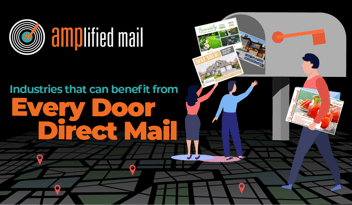Direct Mail Marketing: The Ultimate Cheat Sheet

Direct mail campaigns still remain a key tool in the overall marketing plans of many businesses. When planned, executed and refined correctly, they can be a very effective way of gaining visibility with tangible and measurable results.
Here are a few strategies for optimizing your efforts:
Start with the basics
1. Identify your market: Where will you be sending your pieces and why? The narrower your target audience, the more effective your campaign will be because your message and offer will resonate more clearly.
2. Focus your message on benefits: Ensure that your copywriting includes the benefits most valuable to the consumer rather than the features of your product or service. Most consumers value cost, peace of mind, convenience and quality.
3. Create an easy and direct call to action: What do you want the customer to do - call you, schedule a free consultation, come in? Be clear, direct and frequent in your copy and consider creating a sense of urgency or scarcity by letting them know that supplies or space are limited.
Maximize your impact
4. Direct mail cannot stand alone: Companies that see the highest response rate from their direct mail campaigns are those that integrate it with other marketing efforts. Also, one single mailing does not make a campaign. Be prepared to send out a series of mailings to create a better response rate — consistency is key.
5. Refine and update your list: As you receive feedback and new responses, make sure you keep those records current. Having your sales team connect with existing clients on a regular basis aids in keeping your internal list accurate. If you maintain a retail storefront, get in the habit of verifying customer contact information when they visit.
6. Repurpose: When appropriate use your same mailers for local events, sales kits, handouts, etc. so that you can take advantage of high volume printing discounts. Consider mailing to your vendors as well as your prospects.
7. Make it personal: Personalize your messages as much as possible. Do not limit this to just the headline; insert the consumer's name as often as is reasonable. Also, pictures (you, your staff, your trucks, etc.) help to make a personal connection with your consumer.
8. Testimonials are not lip service: When they sound authentic and are tied directly to your key benefits, testimonials are a great way of social-proofing your expertise. Including tangible success stories helps to quantify the consumer's return on investment. Testimonials with a picture of the customer are most effective.
9. Follow up: Sticking with only a passive means of communication with your consumer limits your response rate. Whenever possible, follow up with both initial responders and non-responders.



